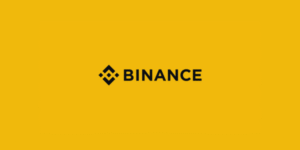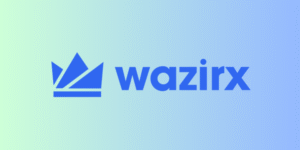Quick Verdict
The KuCoin exchange offers an expansive range of tokens, low trading fees and a feature-rich platform suited for intermediate to advanced crypto users. Its security framework is reasonably strong, but regulatory lapses — including a U.S. plea agreement — and recurrent customer-service complaints mean it may not be the best choice for complete beginners or those seeking a fully regulated fiat gateway. For non-U.S. residents who prioritise alt-coins and active trading tools, it’s a compelling option; for others, caution and full understanding of limitations are key.
Key Takeaways
-
Unique Selling Points: Large listing catalogue (900+ assets), advanced trading features (bots, derivatives).
-
Security: Cold storage + custodial insurance announced; prior major security breach and recent regulatory settlement.
-
Available Cryptocurrencies: Supports hundreds of coins and trading pairs, including major and lesser-known alt-coins.
-
Fees: Base spot fees around 0.1 % (discounted via native token); futures fees lower; fiat deposits/withdrawals carry caveats.
-
User Experience: Platform offers powerful tools and mobile apps but has a steeper learning curve and mixed customer-service record.
-
Customer Support: Review scores on support are quite poor; long response times and user frustrations are recurrent.
Pros
-
Wide token selection and support for emerging alt-coins.
-
Competitive trading fees, with further discount via native token (KCS).
-
Feature-rich: spot, futures, staking, bots, P2P options.
-
Global reach (200+ countries) and actively expanding products.
-
Strong platform architecture (API support, mobile app).
Cons
-
Regulatory issues: Guilty plea in U.S., large fines, exit of U.S. market.
-
Customer-support and review-site ratings are poor (Trustpilot ~1.5/5).
-
Fiat on/off-ramp limitations in some jurisdictions.
-
Complexity may be too much for crypto novices.
-
Though security is improved, the past major hack in 2020 still casts a shadow.
KuCoin Overview
| Parameter | Details |
|---|---|
| Exchange Name | KuCoin |
| Year Established | 2017 |
| Headquarters Location | Mahé, Seychelles |
| Regulatory Compliance | |
| Available Cryptocurrencies | 700+ cryptocurrencies (some sources report 800+) |
| Fiat Currency Support | Supports 50+ fiat currencies via third-party and P2P channels |
| Native Token (if any) | KCS (KuCoin Shares) |
| Maker Fees | Base ~0.10% for maker orders; discounts apply with KCS/volume |
| Taker Fees | Base ~0.10% for taker orders; discounts similarly apply |
| KYC Required | Yes (KYC1 / KYC2 levels for higher limits) |
| Deposit Methods | Crypto deposits free; fiat via card/bank/third-party depending on region |
| Withdrawal Methods | Crypto withdrawals (network fees apply); fiat withdrawal availability varies by region |
| Mobile App Availability | iOS and Android apps available |
| Support Channels | ticketing and live chat |
| Support Availability | 24/7 |
Introduction
Founded in 2017, KuCoin has grown from a niche alt-coin exchange into a global crypto platform serving millions of users. It distinguishes itself by offering one of the largest selections of digital assets, a wide array of trading tools (spot, futures, bots, staking), and a flexible environment aimed at active traders and crypto enthusiasts rather than simple buy-and-hold investors. The platform has been especially popular with those seeking access to lesser-known tokens and high-leverage derivatives. Over time, KuCoin has also ventured into P2P trading, staking and other yield-style offerings. However, its rapid growth has not been without challenge — regulatory scrutiny, a major security breach (2020), and persistent customer-service complaints have tested its reputation. In 2025, the exchange remains a serious option — especially outside the U.S. — but it comes with trade-offs that users must understand before opting in.
Is KuCoin Safe?
Regulatory Compliance
KuCoin is headquartered in Seychelles and serves users globally (except for certain restricted jurisdictions). In January 2025, it pleaded guilty in a U.S. court to operating an unlicensed money-transmitting business and agreed to pay over US $297 million in fines. As part of the settlement, KuCoin agreed to exit the U.S. market for at least two years. While this shows regulatory enforcement, it also highlights historic compliance weaknesses. The company has publicly committed to stronger compliance and is pursuing a MiCA licence in Europe. From a regulatory-risk standpoint, users in U.S. or jurisdictions with tight crypto regulation must exercise caution. For others, KuCoin operates, but without the same regulatory footprint as fully regulated exchanges.
Security Features
KuCoin uses a multi-layered asset-storage system: cold wallets, warm wallets and hot wallets, plus institutional custodial arrangements with partners such as Onchain Custodian and insurance through Lockton. Account security features include 2-factor authentication (2FA), withdrawal-whitelisting, anti-phishing tools, and user-security phrases. These are in line with industry best-practices. That said, the major hack of approximately US $281 million in September 2020 remains a significant blemish; most of the funds were reportedly recovered, but the incident underscored risks in crypto custody. While the seizure of assets due to regulatory action is not a direct security breach, it does raise questions about governance and oversight.
Privacy Practices
KuCoin employs Know Your Customer (KYC) and Anti-Money Laundering (AML) procedures: basic (KYC1) verification requires name, nationality and ID number; advanced (KYC2) verification includes government-issued ID and selfie verification. Crypto deposits are generally allowed before full verification, but withdrawal limits apply until KYC is completed. Data encryption, insurance, and secure key-management are reported in official materials. However, past regulatory findings revealed that KuCoin did not have adequate AML controls for U.S. customers in earlier years. Users should treat KuCoin as a custodial platform: although you control funds, you rely on the exchange for custody and must trust their security infrastructure.
Security Incidents
-
2020 Hack: In September 2020 a major breach saw around US $281 million in crypto assets stolen. KuCoin worked with law enforcement and other exchanges to recover a portion.
-
Regulatory Settlement (2025): Although not a hack, the U.S. enforcement settlement (plea and exit) is a form of institutional risk.
-
April 2025 AWS Outage: Services of major platforms including KuCoin experienced temporary disruptions due to a cloud-provider outage; KuCoin confirmed no user assets or data were compromised.
In summary, KuCoin has invested in modern security controls and custodial partnerships, but historical security and regulatory issues mean that users should proceed with due care — in particular, they should not treat the platform like a fully regulated, deposit-insured institution.
Reputation and User Feedback
Trustpilot and Community Reviews
On Trustpilot, KuCoin holds a rating of approximately 1.6 out of 5 stars with around 1,400 reviews. Breakdown: 5-star ~9 %, 1-star ~78 %. Trustpilot+1 Many reviews criticise locked accounts and unresponsive customer support. On Reddit and other forums similar complaints are common. Bitcointalk Even though review-platform ratings are notoriously skewed in crypto, the volume of negative commentary is noteworthy.
Common Complaints and Praise
Praise: Users frequently cite the wide variety of tradable assets, low fees, advanced trading options, staking capabilities and a well-designed mobile app.
Complaints: Many complaints focus on slow or ineffective customer support, withdrawal delays or confusion, KYC-related frustrations, fiat on/off-ramp constraints and that the platform may feel complex for newcomers.
Supported Cryptocurrencies
Popular Cryptocurrencies
KuCoin supports all major coins — including Bitcoin (BTC), Ethereum (ETH), Tether (USDT), Binance Coin (BNB), etc. These pair across spot and derivatives markets.
Unique Tokens and Coins
One of KuCoin’s strongest features is its support for lesser-known alt-coins, meme tokens and emerging projects long before they appear on major exchanges. This makes it attractive for traders seeking token discovery, though it also raises higher-risk considerations.
Trading Pairs
KuCoin offers hundreds of trading pairs. Spot pairs include fiat-to-crypto via P2P and card/deposit channels (50+ fiat currencies are supported) and crypto-to-crypto. Futures and leveraged pairs (up to 100× leverage) are available for those eligible. Users should check their jurisdiction’s allowed pairs and leverage limits as these vary.
Account Types and Limits
KuCoin features a tiered account structure:
-
KYC Level 1 (Basic Verification): Provides access to many trading features, but sets lower withdrawal limits and may restrict some fiat services.
-
KYC Level 2 (Advanced Verification): Requires government-issued ID and selfie, unlocks higher withdrawal limits and full platform access.
-
Institutional/Corporate Accounts: Designed for business entities, includes additional documentation, higher limits and bespoke services. Some community feedback indicates corporate account setup can be more complex.
Withdrawal and deposit limits vary by region, account status, asset and method — users should always verify the latest figures in their region’s settings.
KuCoin Fees
KuCoin’s fee model is competitive among global exchanges: spot-trading starts at 0.1 % for both maker and taker, with further discounts if using its native token (KCS) or qualifying for VIP tiers. Futures and leveraged products carry their own fee schedules. Deposit and withdrawal fees vary by method and asset; crypto deposit is typically free, but fiat or certain network withdrawals may incur charges. Users should always check live fee schedule in their region.
Trading Fees
-
Spot trading: 0.1 % base maker & taker. Paying with KCS can reduce this by ~20% (effective ~0.08 %).
-
Futures trading: maker ~0.02%, taker ~0.06% (standard). VIP tiers bring these down further.
-
Additional discounts apply for high-volume traders and KCS-holders.
Note: While fees are low, leverage trading involves additional risk and costs (funding, margin).
Deposit & Withdrawal Fees
-
Crypto deposits: Generally free (network fee may apply externally).
-
Fiat deposits: Some methods carry a fee (e.g., SEPA euro deposit 1 EUR).
-
Crypto withdrawals: Fee varies by coin & network (e.g., BTC ~0.0005 BTC).
-
Fiat withdrawals: Can be limited or unsupported in some jurisdictions; fees and supported currencies depend on region.
Other Fees
-
Staking, lending and bot-usage may carry implicit fees or financing costs.
-
Inactive-account or custodial service charges may apply in certain regions (check local terms).
-
P2P trading and card purchases often carry a premium/markup (especially via third-party payment rails).
KuCoin Features and Products
KuCoin offers a rich suite of features designed to cater to a broad spectrum of crypto users. Spot trading is available for a huge range of assets; futures and margin trading (in many jurisdictions) deliver advanced leverage up to 100×. The platform supports automated trading bots (grid bots, DCA bots) and portfolio rebalancing tools. A P2P marketplace allows users to buy/sell crypto directly with fiat in multiple currencies. Staking and lending products allow passive-income generation: you can lock assets for fixed or flexible terms, earn rewards and benefit from native token (KCS) perks. In addition, KuCoin offers an NFT marketplace, a mobile trading app (iOS/Android) and API access (REST & WebSocket) for algorithmic and institutional users. The user interface is well-designed and agile but may feel complex for newcomers due to the depth of features. According to reviews, KuCoin’s infrastructure supports high-volume usage (up to 1 m transactions per second claimed) and is widely used by day traders and algorithmic traders. The breadth of features makes KuCoin a strong choice for active and intermediate–advanced traders, while complete beginners should prepare for a learning curve.
Customer Support
Support Channels
KuCoin offers multiple support channels including live chat (in-app/web), ticket support and email. However, there is no general publicly listed phone-support line in many jurisdictions. While the ticketing system works, users report slow response times and generic replies. On Trustpilot, only ~22% of negative reviews received replies and typical response time is over one month.
Educational Resources
KuCoin maintains a “Learn” section, blog articles, help-centre FAQs and a dedicated “KuCoin Academy” for newcomers. The P2P guide and broader learning resources make the platform reasonably accessible to users willing to self-educate. While documentation is solid, the real-world support experience remains a notable weak point according to users.
How to Use KuCoin: Step-by-Step Guide
-
Registration: Visit https://www.kucoin.com/ or download the mobile app. Sign up using email or phone, choose a strong password, agree to terms, and complete verification steps.
-
Enable Security Measures: Immediately set up 2FA, withdrawal whitelist and anti-phishing phrase.
-
Verification (KYC1/KYC2): Provide personal details for KYC1; for higher limits submit government-issued ID and selfie for KYC2.
-
Deposit Funds: Deposit crypto (free for most coins) or fiat (via supported channels). Note: fees and supported currencies vary by region.
-
Start Trading: Choose spot, futures or P2P markets. Use market/limit orders, set up bots if desired, or explore staking/lending products.
-
Withdraw Funds: Before withdrawal, ensure whitelisted address and KYC status meet requirements. Select coin/network, check fee and minimums, then confirm.
-
Ongoing Management: Use mobile app for on-the-go access, monitor positions, manage risk, and enable alerts/notifications. Review security periodically.
Who Is KuCoin Best For?
-
Intermediate to advanced traders looking for a wide array of alt-coins, high-leverage derivatives and algorithmic/bot features.
-
Alt-coin seekers who want early access to lesser-known tokens and a broad selection beyond mainstream coins.
-
Active day-traders and algorithmic users who value fast execution, API access and multiple trading pairs.
-
Stakers/lenders aiming to generate passive yield via locked assets, P2P markets or native-token perks.
Not ideal for:
-
Complete beginners seeking a very simple interface and fiat on/off-ramp with full regulation in their home country.
-
U.S. residents (or those in highly regulated jurisdictions) who require full regulatory oversight and deposit-insurance.
-
Users who prioritise 24/7 live support or instant withdrawal from fiat into local bank accounts.
Final Verdict
In 2025, KuCoin stands out as a feature-rich and competitively priced cryptocurrency exchange that caters especially well to the ambitious trader or enthusiast looking beyond mainstream tokens. Its strengths — expansive token listings, low fees, advanced trading tools — are clear. That said, its regulatory history (including the U.S. settlement), mixed user-support reputation and limitations around fiat access mean it is not a fully risk-free or fully regulated “beginner” platform. If you understand the risks, are comfortable with self-educating around features and security, and operate outside highly restrictive jurisdictions, KuCoin represents a strong contender. If you need the utmost regulatory safety, beginner-friendly simplicity and full fiat banking integration, you may want to compare with more regulated alternatives.
Frequently Asked Questions
Q1: Is KuCoin safe to use?
A1: Yes, KuCoin deploys industry-standard security (cold wallets, 2FA, withdrawal whitelisting, custodial insurance) and has improved substantially since its 2020 breach. However, it does not carry the same regulatory protections as fully licensed banks or exchanges in certain jurisdictions.
Q2: Can U.S. residents use KuCoin?
A2: U.S. residents are effectively restricted from fully using KuCoin: in January 2025 it agreed to pay nearly US $297 million and leave the U.S. market for at least two years.
Q3: What are the trading fees on KuCoin?
A3: Spot trading fees start at 0.1 % for makers and takers; if you use the native token (KCS) you get ~20 % discount (~0.08 %). Futures fees can be 0.02% maker / 0.06% taker. Crypto deposits are usually free, withdrawals depend on coin/networks.
Q4: How many cryptocurrencies can you trade on KuCoin?
A4: According to multiple sources, KuCoin supports over 900 digital assets (alt-coins) and more than 1,200 trading pairs worldwide (spot & derivatives).
Q5: Is customer support good on KuCoin?
A5: Customer support is among the weaker areas for KuCoin. Review sites (e.g., Trustpilot) rate it ~1.6/5 based on many user complaints. If you prioritise prompt, high-quality support you may want to consider this factor carefully.
Q6: Does KuCoin support fiat deposits and withdrawals?
A6: Yes — KuCoin offers fiat deposit/withdrawal options in many regions via P2P, card and bank transfer (50+ fiat currencies reported). However, fees may apply, access may vary by jurisdiction, and full banking integration is not available in all countries.
Q7: Can you stake coins on KuCoin?
A7: Absolutely — KuCoin provides staking and lending products, flexible and fixed-term options, and native-token (KCS) reward programmes in which holders can receive trading fee discounts and profit-sharing.
Q8: What happened with the 2020 hack and does it affect me?
A8: The platform was hacked in September 2020 for ~US $281 million. Most of the funds were eventually recovered and the platform strengthened its security thereafter. While past incidents don’t mean current risk is high, they underline the importance of personal security (e.g., enabling 2FA, using withdrawal whitelists).
Q9: Should beginners use KuCoin?
A9: Beginners can use KuCoin, but should approach with caution. The interface and range of features are more complex than some “entry-level” exchanges. New users may want to spend time on learning resources, start with small amounts, enable all security settings and understand fees/withdrawal rules.
Q10: How does KuCoin compare to other exchanges?
A10: KuCoin often outperforms many platforms in token variety, tool-richness and lower trading fees. However, relative to highly regulated exchanges (especially in North America/Europe) it may lag in institutional transparency and consumer-protection frameworks.
Our Review Methodology
At Tradelize, we follow strict editorial standards to ensure all content is accurate, unbiased, and thoroughly researched. Our reviews, guides, and articles are fact-checked by a team of experienced cryptocurrency and finance professionals, and are not influenced by advertisers or affiliate relationships. Our Trust Score methodology combines direct data scraping from official broker, exchange, and wallet websites with sentiment analysis of up to 1000 verified user reviews. This dual-source approach enables us to objectively evaluate platform features, fees, regulations, security, and customer satisfaction. We then compile comprehensive, specification-based reviews that reflect both technical details and real user experience.
Disclaimer
Trading cryptocurrencies, forex, CFDs, and other derivatives involves significant risk and may not be suitable for all investors. Leverage can amplify both gains and losses. Past performance is not indicative of future results. The content on Tradelize is for informational purposes only and does not constitute financial or investment advice. Always seek professional guidance before making financial decisions. For full risk disclosures, click here.



